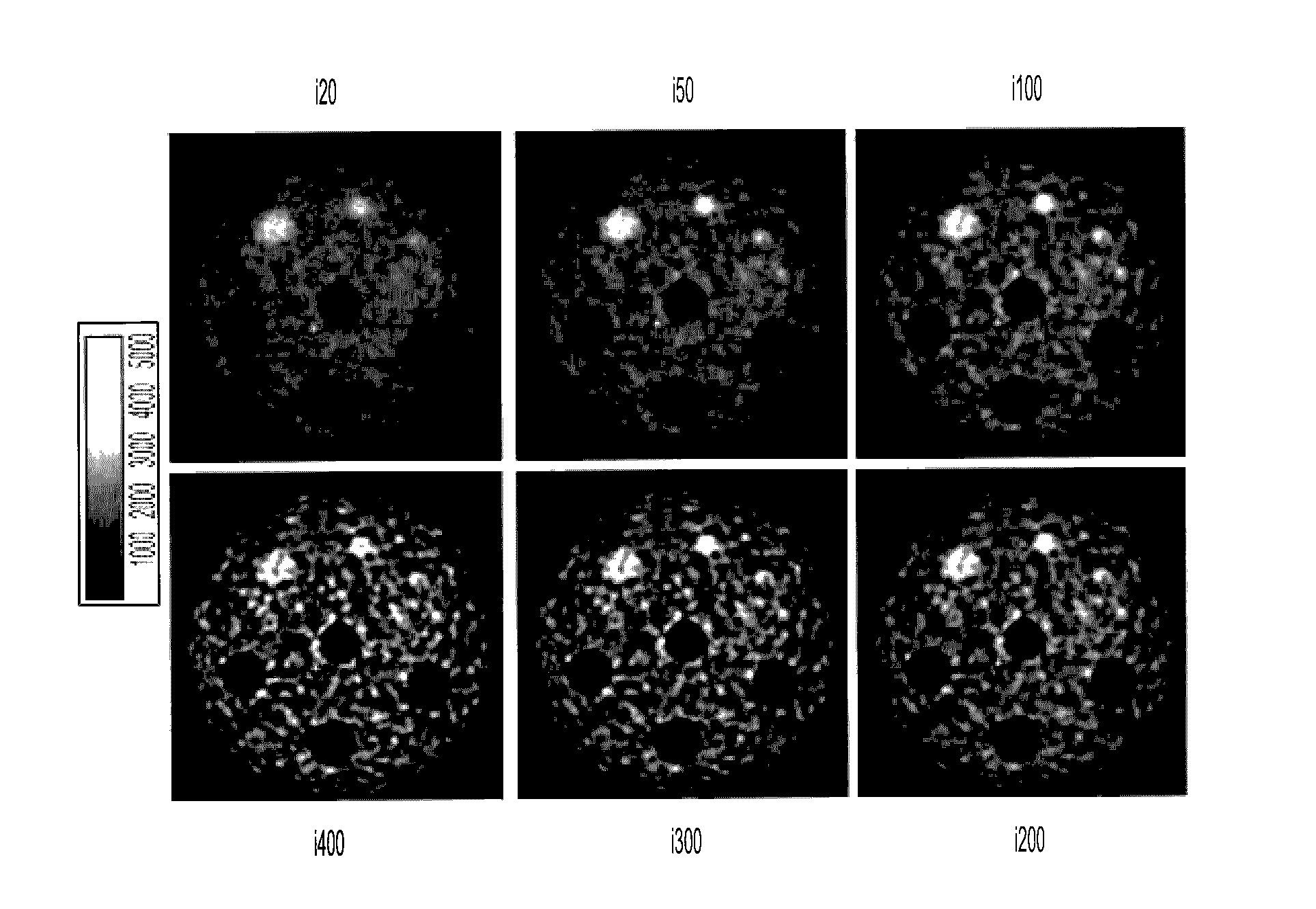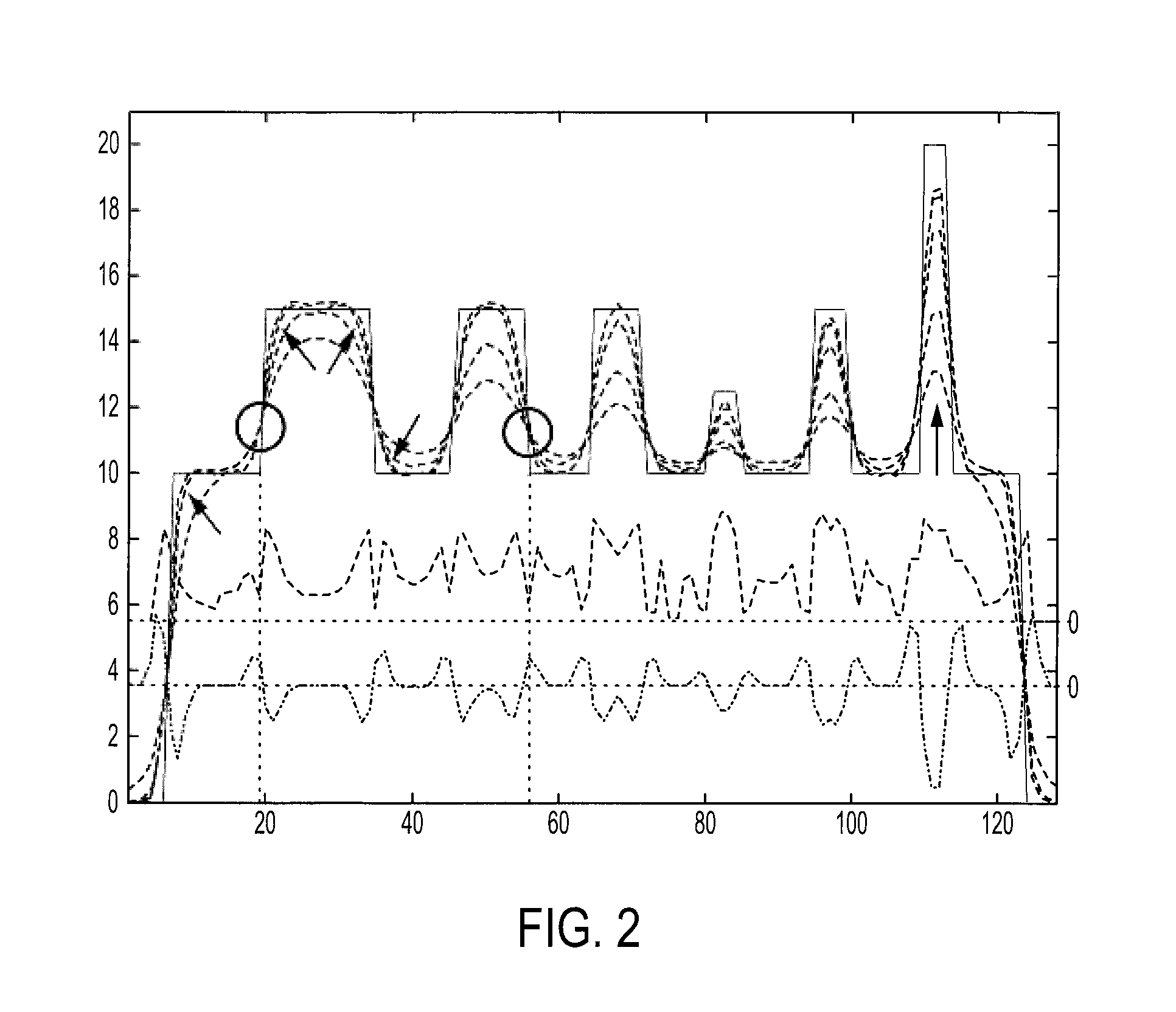Regularization of images
a technology of regularization and images, applied in image enhancement, tomography, instruments, etc., can solve the problems of limiting the clinical utility of many research tracers, time-consuming, risky for patients, and expensive blood chemistry analysis, etc., and achieve the effect of suppressing ringing artifacts and suppressing artifacts
- Summary
- Abstract
- Description
- Claims
- Application Information
AI Technical Summary
Benefits of technology
Problems solved by technology
Method used
Image
Examples
example 1
Locally Weighted Total Variation Denoising for Ringing Artifact Suppression in PET Reconstruction Using PSF Modeling
[0136]Existing and commonly used iterative reconstruction techniques in positron emission tomography (PET) provide a flexible framework for modeling the physics and the scanner geometry, yielding greater image contrast, visual quality and noise robustness than analytical reconstruction methods.
[0137]Modeling and accounting for the physics of the emissions (e.g. positron range) and the detection processes (e.g. crystal scattering or depth of interaction) is possible by measuring and incorporating the detector point spread function (PSF) into the reconstruction process. Such approach has been shown to improve spatial resolution and image contrast (Sureau et al, 2008). Unfortunately, this approach also introduces significant edge artifacts such as over enhancement and Gibbs type of ringing that are both contrast and size dependent (leading to up to 70% overshoot in a cyli...
example 2
Locally Weighted Total Variation Denoising for PSF Modeling Artifact Suppression in Pet Reconstruction
[0170]Incorporating the point spread function (PSF) into the iterative MLEM reconstruction of PET images introduces contrast and size dependent ringing and over enhancement artifacts. As described herein, TV-PSF-MLEM can be used to suppress these artifacts based on the introduction of a locally-weighted total variation regularization within the MLEM reconstruction algorithm. On non-noisy PET measures, the TV spatial weights can be computed based on the point-wise convergence rate of a preliminary MLEM reconstruction, for each voxel. The TV-PSF-MLEM weighting scheme can be extended to noisy measures introducing a noise-independent weighting scheme. As described herein, the performance of TV-PSF-MLEM weighting scheme having a noise-independent weighting scheme can be compared to a state of the art PET denoising method. Results on numerical phantoms show that the TV-PSF-MLEM method off...
example 3
Reconstruction Based Resolution Recovery
[0206]A fundamental limitation of PET technology is the image resolution of 8-12 mm, which varies based on scanner and application. In molecular imaging every millimeter matters. Improving the resolution by a single millimeter could open the door to a wide range of applications. More reliable detection of small tumors could translate into earlier diagnosis and better prognosis. The need for quantifying of signal from internal carotid arteries in the brain, that are on the order of 6-8 mm in diameter, has been discussed. Reliable quantitation of carotid signal could facilitate estimation of the arterial input function and lead to less invasive PET quantification. Another application of interest is the quantification of signal from raphe nucleus in the brain, whose five nuclei are spherical structures that are roughly 5-6 mm in diameter. The raphe is a major site of serotonin receptors and regulator of serotonin utilization through the brain. On...
PUM
 Login to View More
Login to View More Abstract
Description
Claims
Application Information
 Login to View More
Login to View More - R&D
- Intellectual Property
- Life Sciences
- Materials
- Tech Scout
- Unparalleled Data Quality
- Higher Quality Content
- 60% Fewer Hallucinations
Browse by: Latest US Patents, China's latest patents, Technical Efficacy Thesaurus, Application Domain, Technology Topic, Popular Technical Reports.
© 2025 PatSnap. All rights reserved.Legal|Privacy policy|Modern Slavery Act Transparency Statement|Sitemap|About US| Contact US: help@patsnap.com



